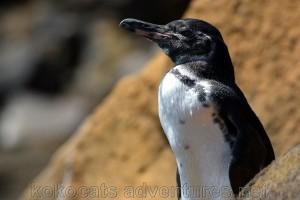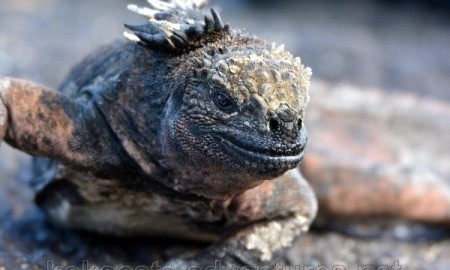While we are getting ready for the next adventure and you are anxiously awaiting blog posts, here is an introductory story about a trip to the Galapagos islands Anja and I did in 2014.
Should we even go there?
The Galapagos Islands – They seem to be on most people’s list of destinations, everyone thinks of Darwin, doesn’t quite remember where the islands actually are and will most likely not go there after all (at least from the European side of the world). Which is probably a good thing – we were holding back for many years because we had heard about the negative influence the big tourist boats and tourism-related settlements on the islands were having on this unique and fragile environment.  The chart below from the Galapagos Conservancy Organisation is showing a trend that is not good news for the animals of the islands that have to cope with the rough environment and the influence people are having on it and them.
The chart below from the Galapagos Conservancy Organisation is showing a trend that is not good news for the animals of the islands that have to cope with the rough environment and the influence people are having on it and them.
Most of the around 150,000 annual visitors require infrastructure and supplies, villages grow and the surrounding ocean is exploited. The Galapagos Park is officially a protected area, but corruption, insufficient controls and too many people – locals and visitors alike – that put their personal benefit before everything else are continuing to threaten a landscape and a group of animals that can be found nowhere else on earth. An interesting but somewhat depressing read on this issue and some stories about the early inhabitants of the islands is “Galapagos at the crossroads“.
Choose the right company!
We personally only changed our minds after finding out about a travel company that offers in-depths trips on small boats following eco-tourism ideas and without using any hotels on the islands. With ten like-minded travellers we slept on the boat and cruised around pretty much all the islands for 15 days. By sheer luck we also chose a time when the holiday seasons are over and many boats are on dry docks. At most places we were the only people in between the animals – and the animals told us where to go. We had two amazing guides, both Galapagos veterans full of excitement about the natural beauty of the place. Unfortunately other companies employ guides that actually don’t “believe” in evolution and try to slip creationism ideas to their guests. I think that guide would have slipped overboard if he was on my trip to the birthplace of Darwins theory of evolution. In summary, we had a good setup to start with and the trip turned out to be most incredible!

Galapagos penguin at the North-West of Isabela Island – the only penguins in the Northern hemisphere.
A lesson in biodiversity
Even after having read a bit in preparation and watched the odd YouTube video other travellers had made, you are struck with amazement by the uniqueness and diversity of the land and of the animals. About 80% of the land birds, 97% of the reptiles and land mammals, more than 20% of the marine species, and more than 30% of the plants are endemic, i.e. are found nowhere else on earth (Galapagos Conservancy). Galapagos penguins are one of the oddities, with their next relatives many thousand kilometers in the south. We met them on Isabela Island in the west of Galapagos. Snorkeling at Vincenta Roca Point off Isabela Island was a biology lesson in biodiversity that the students will never forget: While I was mesmerized by the large schools of fish in front of me, a Galapagos penguin shoots past me and into the fish that immediately form a tunnel around it. Under my feet Galapagos sea lions are playing in the deeper waters – both types of animals moving effortless and with incredible speed under water, while seemingly clumsy when I meet them on land later. In front of my snorkel a group of green sea turtles want to go past, I hurriedly move aside. Swimming a bit closer back to the shore I get to see the flightless cormorant leaving the water, and a marine iguana sliding in to get a snack of algae growing on the rocks below. Another two examples of animal adapted in weird and wonderful ways to the environment their ancestors landed on four or five million years ago: Most islands are without fresh water and food sources are therefor sparse. The different cold currents of the ocean however offer loads of food – provided these birds and reptiles learn how to dive! Below are a few more shots of iguanas – one of my favorite animals on the islands. More stories and pictures to follow…




